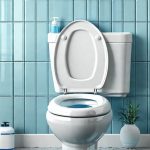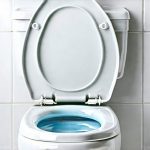Maintaining good health extends beyond consistent exercise; it crucially encompasses mindful hygiene practices, particularly when engaging in activities like gym workouts. Gyms are shared spaces teeming with bacteria and potential sources of infection, making them breeding grounds for various ailments if proper precautions aren’t taken. While most people focus on surface cleanliness – wiping down equipment – a less-discussed but equally important aspect relates to urogenital health. The physical exertion involved in exercise, coupled with the environment, can inadvertently increase the risk of bladder issues and urinary tract infections (UTIs) for individuals prone to them or those who aren’t aware of preventative measures. This article will delve into practical hygiene tips specifically aimed at safeguarding your bladder health while enjoying your fitness routine.
The connection between gym habits and bladder trouble isn’t always obvious, but it is significant. Increased sweating creates a warm, moist environment conducive to bacterial growth. Tight-fitting workout clothes, especially those made of non-breathable materials, can exacerbate this issue in the pelvic region. Furthermore, intense physical activity can temporarily weaken the pelvic floor muscles, which play a vital role in bladder control. Improper wiping techniques after using gym restrooms and neglecting personal hygiene post-workout contribute to the risk as well. Understanding these factors is the first step towards proactive prevention and ensuring your fitness journey remains healthy and comfortable.
Pre-Workout Preparation: Setting Yourself Up for Success
Preparing before you even begin your workout can significantly reduce your susceptibility to bladder issues. This isn’t just about stretching; it’s about mindful choices that protect your health. One of the most important steps is hydration – adequate water intake supports overall bodily functions, including kidney and bladder health. However, timing is key: avoid excessive fluid consumption immediately before exercise as this can lead to frequent urination during your workout, potentially straining pelvic floor muscles. Instead, ensure you’re well-hydrated throughout the day leading up to your session.
Choosing appropriate clothing is also crucial. Opt for breathable fabrics like moisture-wicking materials that allow air circulation and prevent excessive sweating in sensitive areas. Avoid tight-fitting leggings or shorts if they contribute to discomfort or chafing. Consider wearing supportive underwear, especially during high-impact activities, to provide additional pelvic floor support. Finally, prioritize emptying your bladder before starting your workout. This minimizes pressure during exercise and reduces the likelihood of accidents or strain on your bladder muscles.
Post-Workout Recovery & Hygiene: Protecting Your Urogenital Health
Post-workout care is just as important as pre-workout preparation. The immediate post-exercise period is when you’re most vulnerable to bacterial growth due to sweat and potential muscle fatigue. Promptly removing sweaty workout clothes is essential – don’t sit around in damp garments, as this creates an ideal environment for bacteria to thrive. Showering immediately after your workout is the best course of action; if that isn’t possible, consider using antibacterial wipes to cleanse the genital area.
Pay close attention to hygiene practices in gym restrooms. These spaces are often high-traffic areas and can harbor bacteria. Avoid sitting directly on toilet seats – use a disposable seat cover or hover if possible. Always wash your hands thoroughly with soap and water after using the restroom, and consider using hand sanitizer as an extra precaution. Finally, change into clean, dry clothes after showering to minimize moisture and further reduce the risk of infection. Remember that proactive post-workout hygiene is a powerful defense against potential bladder problems.
Pelvic Floor Exercises: Strengthening Your Foundation
A strong pelvic floor is your natural line of defense against urinary incontinence and other bladder issues. These muscles support your bladder, uterus (if applicable), and bowel, contributing to overall stability and control. Incorporating Kegel exercises into your routine can significantly strengthen these muscles over time.
- To perform Kegels correctly:
- Identify the pelvic floor muscles – imagine you’re trying to stop the flow of urine midstream. These are the muscles you’ll be working.
- Contract those muscles for 3-5 seconds, then relax for the same amount of time.
- Repeat this exercise 10-15 times, several times throughout the day.
Consistency is key – even small, regular Kegel exercises can make a noticeable difference in bladder control and pelvic floor strength. It’s important to note that improper technique can be ineffective or even harmful; if you’re unsure about how to perform Kegels correctly, consult with a physical therapist specializing in pelvic health.
Hygiene Considerations Specific to Gym Equipment
Gym equipment is touched by countless individuals each day, making it a potential source of bacteria and infection. While gyms typically provide disinfectant wipes, relying solely on these may not be sufficient. It’s important to understand that some surfaces are more prone to bacterial contamination than others – specifically, areas where skin contact is frequent, such as exercise benches, handles, and yoga mats.
Beyond wiping down equipment before and after use (a standard practice most gyms encourage), consider bringing your own towel to create a barrier between your skin and the surface. Avoid sharing towels or personal hygiene items with others. If you’re using shared equipment like weight machines, pay particular attention to cleaning handles and contact points thoroughly. Don’t hesitate to ask gym staff about their cleaning protocols and request additional disinfection if needed.
Recognizing Symptoms & Seeking Guidance
Being aware of potential symptoms related to bladder issues is crucial for early detection and intervention. Common signs of a UTI include: frequent urination, burning sensation during urination, cloudy or strong-smelling urine, pelvic pain, and feeling the need to urinate even when your bladder is empty. If you experience any of these symptoms, it’s important to consult with a healthcare professional for diagnosis and treatment.
Similarly, unintentional leakage of urine (incontinence) can be a sign of weakened pelvic floor muscles or other underlying issues. Don’t ignore these symptoms – seeking medical guidance early on can help identify the cause and develop an appropriate management plan. This article does not provide medical advice, and it’s essential to consult with a qualified healthcare provider for any health concerns you may have. They can offer personalized recommendations based on your individual needs and circumstances, ensuring a proactive approach to maintaining both fitness and bladder health.





















